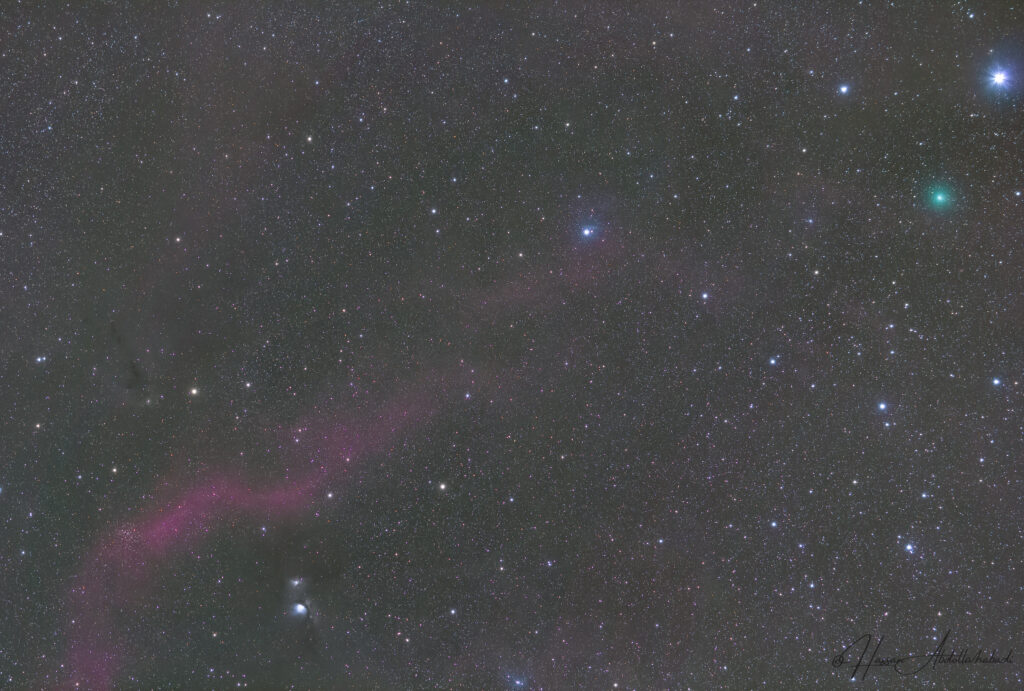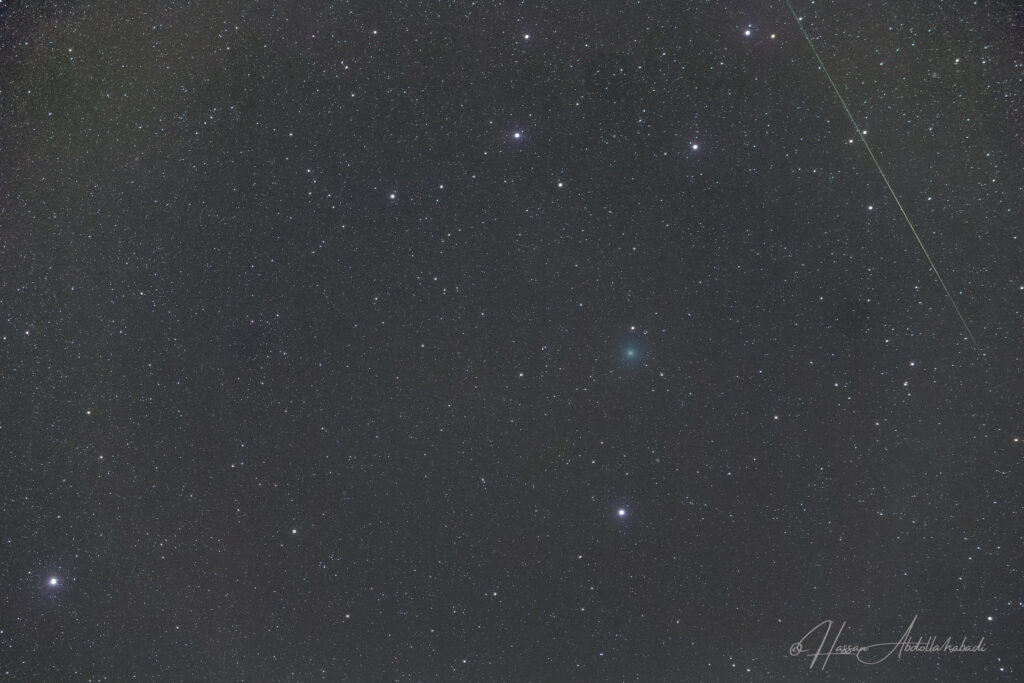Comet C/2020 M5 (ATLAS) is an object whose orbit does not match any defined comet orbit class. NASA JPL has not classified ATLAS as potentially hazardous because its orbit does not bring it close to Earth.
ATLAS orbits the sun every 14,346,338.12 years), coming as close as 5.90 AU and reaching as far as 117994.10 AU from the sun. Its orbit is highly elliptical.
No Close Approaches
ATLAS’s orbit is 2.33 AU from Earth’s orbit at its closest point. This means that there is an extremely wide berth between this asteroid and Earth at all times.
Orbital simulations conducted by NASA JPL’s CNEOS do not show any close approaches to Earth.
In this image, you can see the Atlas comet and a Orionid meteor shower bright in the constellation of Lepus
This comet will enter the constellation Orion in the coming days
Type : Comet
Optic : Samyang 135 mm
Focal Length : 135 mm
Mount : Sky-Watcher Star Adventurer
Camera : Canon EOS 60Da
ISO : 1250
Filters : –
Guide Scope : –
Total EXP :
Technique used : –
Dark : Yes
Flat : –
Bias : –
Dark Flat : –
Software : DeepSky Stacker , PixInsight , Photoshop
Date Taken : 15 November 2020
Place : Akbar Abad Village , Chelpo Village , Rivash- Zavang Village, Neyshabure , Iran
دنبالهدار اطلس ام ۵
دنبالهدار اطلس ام ۵ جرمی است که مدار آن با هیچ کلاس مداری تعریفشده برای دنبالهدارها مطابقت ندارد. آزمایشگاه پیشرانش جت ناسا، اطلس را به عنوان یک جرم بالقوه خطرناک طبقهبندی نکرده است، زیرا مدار آن، آن را به زمین نزدیک نمیکند
اطلس هر ۱۴ هزار سال یکبار به دور خورشید میچرخد و تا ۵.۹۰ واحد نجومی به خورشید نزدیک میشود و تا ۱۱۸ هزار واحد نجومی از خورشید فاصله میگیرد. مدار آن بسیار بیضوی است
مدار اطلس در نزدیکترین نقطه خود ۲.۳۳ واحد نجومی از مدار زمین فاصله دارد. این بدان معناست که همیشه فاصله بسیار زیادی بین این سیارک و زمین وجود دارد
شبیهسازیهای مداری انجام شده توسط آزمایشگاه پیشرانش جت ناسا، هیچ نزدیکی به زمین را نشان نمیدهد
در این تصویر، میتوانید دنبالهدار اطلس و بارش شهابی جباری را در صورت فلکی خرگوش ببینید. این دنبالهدار در روزهای آینده وارد صورت فلکی جبار خواهد شد
تصویر برداری ۲۵ آبان ۱۳۹۹


